I recently wrote a article about OSB. The topic generated a lot of comments, with readers quickly splitting into two camps, some supporting the use of OSB, others saying it is a dangerous product that should really be banned. As there were people asking for more details, I decided to reread a subject we have already touched on on another occasion namely emission of formaldehyde. Why formaldehyde emission? Because it can transform, under certain conditions, chipboard, MDF, plywood or OSB into products hazardous to health. But first things first.
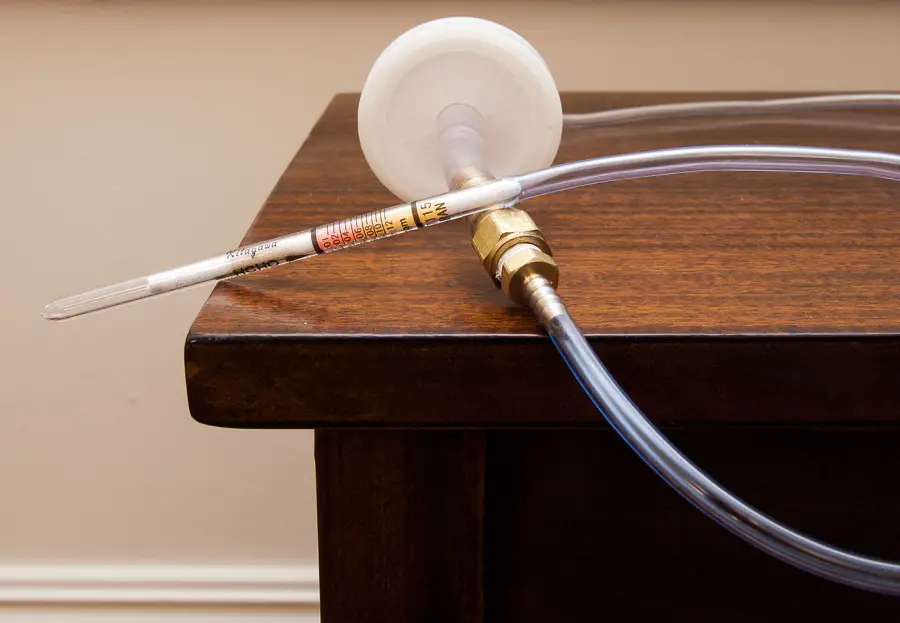
Formaldehyde was discovered by A.M.Butlerov in 1857. It is a colourless, flammable gas with a strong pungent odour, soluble in water and alcohol and insoluble in petroleum ether, very unstable in gaseous state due to its tendency to polymerize. In 2008, the World Health Organization reclassified formaldehyde as a Category 1 potential carcinogen. It is considered a toxic substance and can have an irritant and necrotizing action on the skin and mucous membranes, with prolonged exposure leading to irritation of the skin of the face and arms, dermatitis, conjunctivitis. The same toxicity can also be an advantage, however, as it is used in medicine as a disinfectant or for the preservation of anatomical parts, but also in tanning and photography.
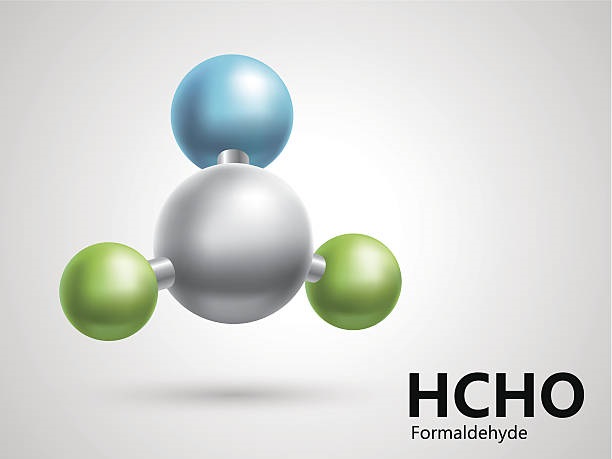
Formaldehyde is used as a raw material for products such as ethylene glycol (antifreeze), soil fertilizers, disinfectants, dyes, cosmetics, etc. It is the basic raw material for the manufacture of ureo- and phenol-formaldehyde resins used as adhesives in the wood and furniture industry.
Formaldehyde is all around us. We find it in our homes, in disinfectants, wallpaper adhesives, paints, hard-wearing textiles, insulation foams, in furniture made from wood, even in wood. It's in room fresheners, candles and scented sticks. Cigarette smoke also contains large amounts of formaldehyde, as does bee venom, hence anaphylactic shock in allergic people.
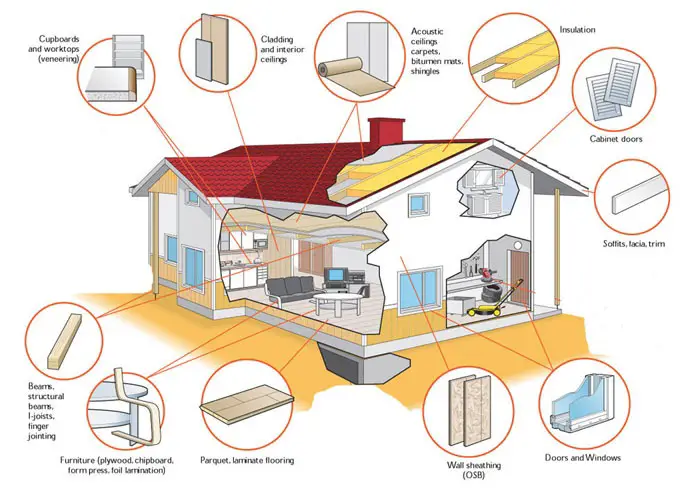
For wood and wood-based panels there is formaldehyde chemically bound in the structure adhesives used for gluingbut also formaldehyde in gaseous, unbound form, both in glue and in wood. It is this unbound formaldehyde that is the dangerous formaldehyde because it tends to escape. The smaller the amount given off by a board, the less dangerous that board is. So emission of formaldehyde is the main quality indicator for wood-based products. It represents the amount of formaldehyde released into the ambient air from a wood-based board through its faces and edges under normal or accelerated conditions.
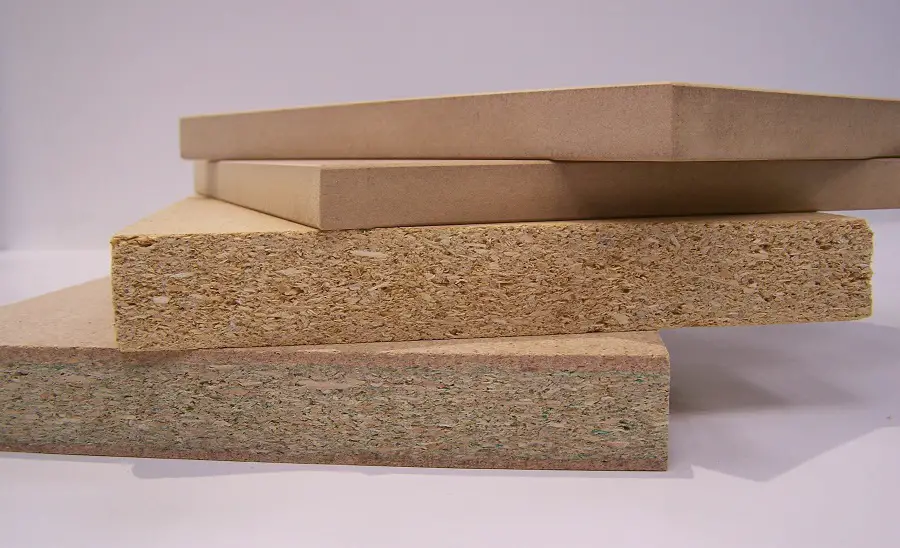
As above a certain limit it becomes dangerous, formaldehyde emission has been standardized. There are European standards, which we operate by, but also standards of other countries or companies (like IKEA, for example). According to the European Standard EN 13986/2004 wood-based panels can be in class E1 or E2, depending on the amount of formaldehyde emitted as determined by testing. Class E1 represents an amount of 0.1 ppm (parts per million), a level considered safe by the World Health Organization (WHO) in 2010. To give you an idea, wood has a formaldehyde emission of 0.01 ppm. Anything more than 0.1 ppm falls into the E2 emission class.
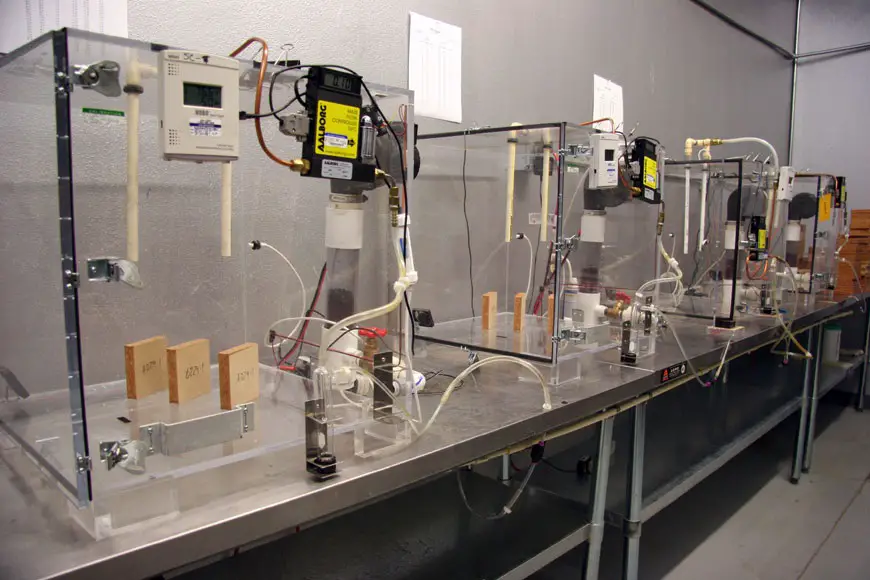
Although the WHO requirements have not changed, major customers are demanding even lower formaldehyde emissions from manufacturers, virtually products that are considered to be formaldehyde emission free. These tiles fall into the E0 emission class. Free formaldehyde-free adhesives are used to produce them, but this increases the price of the boards. Such a claim frequently applies to OSB boards that are not protected against emission by finishing (they are not sealed with finishes). Similarly, the boards used in the manufacture of children's furniture meet the "formaldehyde free" requirement. I've seen children's cribs made from chipboard that had absolutely no odor when taken out of the packaging.
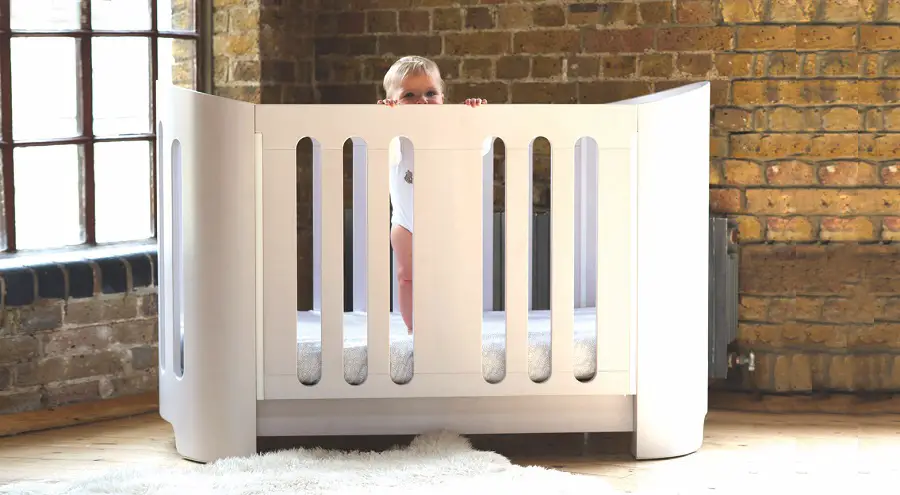
The fact that the cumulative emission of free formaldehyde around us can exceed permissible limits worries many people. That's why devices and kits have been developed to test the air in rooms to avoid the risk of living in contaminated air.
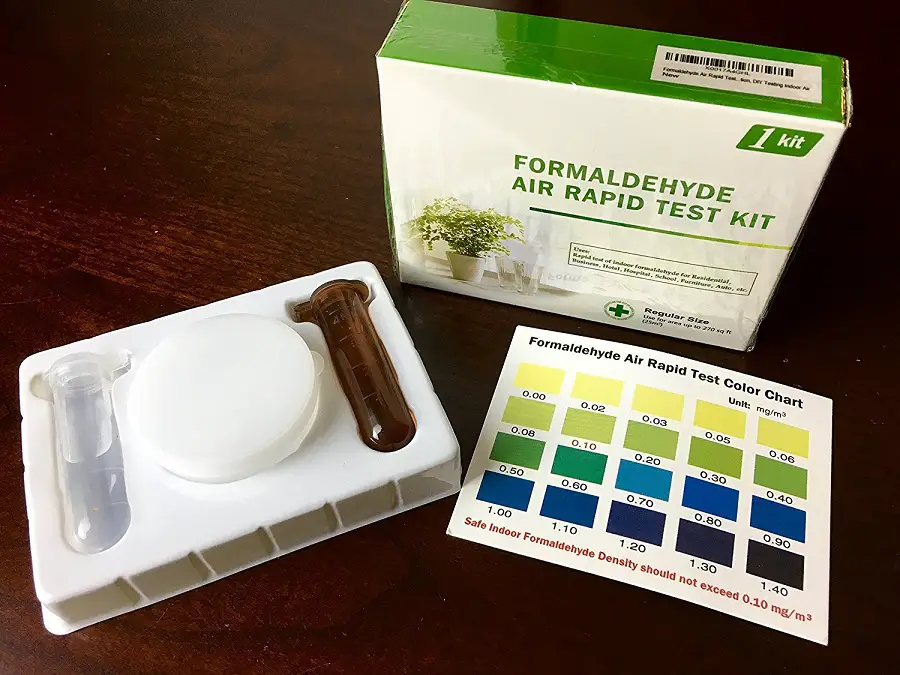
As you can see, formaldehyde is a product that can become toxic, but it is also a raw material for very useful materials, and I am not just talking about wood-based panels. That is why we need to find a way to maximize the advantages and avoid as far as possible the disadvantages, because it is obvious that, at least for the time being, it will not be abandoned.

























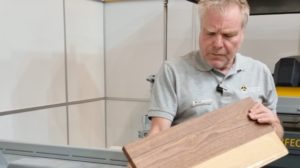











If it's in cigarette smoke why don't you advocate for a smoking ban as osb I don't happen to smell it every day but cigarette smoke is everywhere.
Interesting article.Thanks for the information!
Chemist lady,
When you talk about ppm, know that there are ppm of mass and ppm of volume. A huge difference between these ppm. Then you talk about emissivity, what is that measured in ppm/m2 or ppm/m3? And are these ppm found in air or wood or where? Because if they're in the air you've opened the window and they're gone!
Hello,
I'm sorry you're mad at me, but I can't help it, that's the way I am. European formaldehyde emission regulationsin ppm. My intention was to talk about the fact that there is an emission limit imposed on wood-derived boards, and if it is exceeded, the smell is disturbing and at some point even dangerous. I did not want to talk about the formaldehyde content determinations expressed in mg/100g (perforator method) that the board manufacturers do, nor about the different methods of determining formaldehyde emission. It would have been a far too technical article and I think only you and I would have read it. 🙂
All the best
Good evening dear chemist! I read with great interest your articles ;I also have a question - I have a lacquered wooden table taken from a German site and for several weeks a pungent smell persists on the entire lacquered surface. It has been covered with musama type tablecloth and after removing it I have dried up the smell. It is very irritating despite continuous airing, I gave it Pronto, Fairy, special furniture wipes. I will also mention that I have a couch near the table that had mold in the storage box, but I got rid of it. My question is how to get rid of this smell, as I am out of solutions and don't want to give up this table. Thank you in advance!
Hello!
It does not appear to be formaldehyde. You say the table is made of wood. Even if formaldehyde is also in wood or wood preservatives it is in very small percentages and impossible to detect by smell. Only in wood-derived boards, such as chipboard or MDF, is the smell noticeable. And in these cases only if the boards are of inferior quality.
The smell you mention could be solvent or mold. In the first case it is possible that the mustard has prevented the natural removal of solvent from the varnish layer. After it is applied and hardens, the varnish continues to remove solvent from the interior for another 2-4 weeks. If this is prevented the solvent stays inside the varnish layer until it has a chance to come out. If you can, take the table outside in a covered area, protected from rain and sun. The smell goes away much faster if the space is ventilated. Traces of solvent will come out of the varnish film more quickly.
The second possibility is to thread mould. Underneath the mold it is possible to get mold, especially if there is moisture. In this case wipe the surface with a diluted solution of hypochlorite-based laundry bleach (those cheap solutions for bleaching laundry). It is very effective against mould. Leave the table in an airy, ventilated place to dry thoroughly. In this case the smell disappears much faster than with solvent (1-2 days).
All the best!
Dear Madam.
Is it related to the varnish and solvent used in this wood product, is it understood that it would only be harmful for 2-4 weeks until the solvent is removed? Could it have been a varnish or paint that was not water based?
Should we avoid painting or varnishing wooden furniture with polyurethane-based products?
Hello!
It is not very harmful, more unpleasant. It's like sitting in the smell of spirits or gasoline for a long time. The concentration is not very high, just enough to be harmful. Most of the solvent has been removed in the drying process in the factory. It's just the traces left behind.
If you smell solvent, the furniture has definitely been finished with solvent-based varnish. There are also water-based varnishes based on polyurethane. Solvent-based ones have been used for a long time and people have gotten used to them. They are also very hard-wearing and nice looking. Water-based products, however, are "coming from a long way behind" and in a few years' time they will be in the majority in factories and workshops. But for some time, especially in small workshops and factories, solvent-based products are preferred.
All the best!
[...] Mihaela Radu (2017), Formaldehyde emission from wood-based panels, an always hot topic, Retrieved from "Revista din Lemn" (https://revistadinlemn.ro/2017/10/30/emisia-de-formaldehida-placilor-derivate-din-lemn-un-subiec…😉 [...]
Hello,
Regarding the formaldehyde emissions of double laminate flooring recommended for underfloor heating, can you tell me if there is a category E 0.5? I came across this category on the technical data sheet of Bauwerk double laminate flooring (1 layer of hardwood + 1 layer of HDF).
Also, another version of double laminate flooring from the same manufacturer (1 layer of hardwood + 1 layer of softwood) is included in the E 1 category of formaldehyde emissions. Honestly, knowing that HDF contains adhesive, my expectation was that formaldehyde emissions would be higher in the case of double laminate flooring with HDF. How is the E 0.5 category interpreted in this situation?
Thank you for your help!
Hello.
Yes, there is also the Eo,5 formaldehyde emission class. If at E1 an emission of 0.1 ppm (parts per million) is considered acceptable, at E0.5 it must be up to 0.05 ppm. This is a fairly general statement because the limits differ according to the type of product (panel, plywood, etc.) and the method by which the emission is determined. However, the differences are very small.
The largest amount of formaldehyde comes from adeviz. If an adhesive that does not contain free formaldehyde or formaldehyde traps was used in the production of HDF, then it may be in emission class E0 and the emission comes only from the adhesive that was used to glue the HDF to the wood. This may be the reason for the difference in emissions between the two types of flooring.
I hope you found it useful.
All the best!
Don't forget to subscribe to the printed Wood Magazine! For only 58 lei/year you can find out news in the field, discover craft ideas or trade secrets. We remind you that the content in the printed magazine is different from the one on the website. Details in the link below.
Thank you!https://revistadinlemn.ro/product/abonament-revista-din-lemn/
You helped me a lot! Thank you!
Hello dear chemist.
I asked a supplier of mdf, the technical data sheet of the product and I found formaldehyde expressed in mg/100g without specifying any E1 or E2 class.
How can I identify the class by this expression of mg content?
Or what is the amount considered safe by the World Organization in terms of this expression mg/100g?
Good evening!
This is another method for determining formaldehyde. The method is called Perforator and is expressed in mg formaldehyde/100 g plate. To be in formaldehyde emission class E1 the content in MDF board must be max.8 mg formaldehyde/100 g board. This is equivalent to 0.1 ppm in air analysis.
All the best!
thanks nice
Unfortunately I used OSB on the ceiling of a small shed and now the smell is quite unbearable. Can this smell be reduced? Would it help to paint it with a certain paint, urea, washable... Anything else? Ms nice!
Hello!
Emission occurs mainly through the edges where the board has been cut. Coating the boards with filming materials (paints, varnishes) can reduce the emission, but it is most reduced if it is possible to cover the "exposed" edges, i.e. those not covered by other boards.
All the best!
Hello,
How long will an OSB board emit this formaldehyde?
Good evening!
It depends on which formaldehyde emission class it is in. In classes E1 and E0.5 the emissions are small, the smell is less detectable, it is only felt if the board is cut and can last from a few days to a few weeks.
Formaldehyde comes out through the freshly cut edges. If these sources are covered the smell is not noticeable. This is why OSB is not left exposed in construction.
Higher grades of E1 have a stronger smell and can last for years.
All the best!
Hello, I am going to rent a flat where a new kitchen furniture and three new interior doors, a new sofa bed and a new paint job were installed a month ago. What would be the danger of formaldehyde emissions from all the renovation, especially since there is a 5 year old child. I don't know in which emission category it falls, at the entrance I smelled a slightly pungent smell, even though the heating was off in the house.
Hello!
In my opinion, the danger can only come from kitchen furniture and only if it was made of cheap laminated chipboard. You can check by opening one of the drawers. If there is a strong pungent smell coming from inside, you are dealing with such chipboard. In this case air the kitchen daily by leaving all drawers and cupboards open. Unfortunately, months may pass and the smell is still persistent. Because of it, without frequent airing, you can get headaches.
If you don't get that impossible-to-miss smell when you open the drawer, there's no danger. Even if there are emissions, they are at a very low level and do not pose health problems. After a few airings you won't smell the slightly pungent odour you smell now either.
All the best!
Thank you very much for your answer. Have a nice evening, all the best.
You're welcome! Have a nice weekend!
Hello! In your experience what type (brand) of laminate pallet do you recommend? From what I've seen they're pretty much all in the E1 class, can you recommend something in the E0 class? Thanks
Hello!
I know that Egger, an Austrian company with a factory in Rădăuți, manufactured a type of chipboard in class E0,5. Holver also had PAL with very low formaldehyde emission on offer.
Hello and thank you very much for the useful information!
I have a question .......
I work since 2013 in a parquet warehouse, about 500 square meters and about 10 meters high.As far as I know, there are about 750 models of parquet, from the oldest triple laminate, solid, oil, lacquer, etc.
I often feel very tired at work and my eyes sting, even if I slept well at night.
I've often wondered if it could be from formaldehyde emissions. The newer Pergo (Belgian manufacturer) mdf packs with emission (they write) e01.
When I'm out of storage, I feel much fresher and not tired.
Is there a device or apparatus that can measure formaldehyde levels in such a large warehouse?
Thank you, all the best!
Hello!
Yes, there are air quality testers that determine the content of free formaldehyde, volatile organic compounds (VOCs), benzene and other hazardous substances. They determine each one individually. They can also be found on emag.
The European Commission has recently halved the permitted emission limit for formaldehyde, but the law will become mandatory in 3 years.
I wish you good health!
https://revistadinlemn.ro/2023/08/02/comisia-europeana-stabileste-o-noua-limita-pentru-emisia-de-formaldehida-din-panouri-si-mobilier-din-lemn/
https://revistadinlemn.ro/2018/11/09/ce-inseamna-cov-de-pe-eticheta-lacurilor-si-vopselelor-si-cum-ne-afecteaza-emisia-lor/